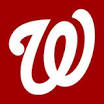The old adage goes that good baseball teams play .500 on the road and have a winning record at home. Still,  Nationals fans can’t help but have a bad taste in their mouths after dropping the last four games of a 5-5 road trip to the Chicago Cubs.
Nationals fans can’t help but have a bad taste in their mouths after dropping the last four games of a 5-5 road trip to the Chicago Cubs.
It seems the Cubs have been edging out the Nats since the offseason, when they won bidding wars for free agents Ben Zobrist (5-for-13, 3HR, 9 RBI in the series) and Jason Heyward (2-for-5 Sunday with a diving catch to rob Ryan Zimmerman of a potential RBI hit in the seventh).
And Chicago certainly kept up the momentum the past four days, winning by getting ahead early and withstanding a late rally, as they did Thursday and Friday, and coming from behind against the bullpen as they did Saturday and Sunday.
Perhaps this “big” series in the Windy City between the National League’s top two teams was just a bit too big for some Nats, like Anthony Rendon (2-for-17, 2 RBI, 4 strikeouts) or Ryan Zimmerman (2-for-19, 20 LOB).
Or maybe, as manager Dusty Baker said after Saturday’s loss, “the ball just wasn’t bouncing our way.” Bryce Harper had one bounce off his glove after avoiding the right field wall, and an RBI hit was just past the outstretched glove of Danny Espinosa.
In truth, Cubs were both lucky and good, and the Nats were both unlucky and bad. That’s baseball. So after one four-game set in the first week of May, the Cubs are clearly the better team, by the measure of of 5 ½ games in the standings.
We know all about the Cubs’ gaudy plus-102 run differential compared to the Nats’ plus-41, but is there really that much difference between these two teams? Are the Nats really coming up short in all areas of the game while the Cubs are excelling? Or have the Cubs put themselves in position to succeed by getting more opportunities in clutch situations?
- The Nats did waste a lot of scoring opportunities in the series, enough to probably have cost them two games. But on the season, the Nats are actually outhitting the Cubs with runners in scoring position, .254 (60-for-236) to .248 (81-for-326). The lesson here is that the Cubs have had more opportunities by virtue of their league-leading .368 OBP.
- The Nats are also outhitting the Cubs with two out, .258 (94-for-264) to .231 (75-for-324) and two outs and RISP, .260 (32-for-123) to .230 (34-for-158), so the Nats can come up with a clutch hit.
- On the mound, the Cubs widened their team ERA lead over the Nats to 2.48 to 2.80, and allowed the Nats to move past them in home runs allowed (22-20) and walks allowed (90-88), despite putting Bryce Harper on base 13 times.
- The Chicago bullpen’s ERA is 2.99, 2nd best in the NL, but clearly better than the Nats’ 3.30, while the starters improved their league-leading ERA to 2.26, ahead of the No. 2 Nats’ 2.58.
So the Cubs have, in fact, clearly distinguished themselves from the Nationals at this point in the season, and the stats show they’ve done it with strong pitching throughout the game and opportunistic hitting. But they also show the two clubs are not as far apart as they seem.
History tells us that the Cubs will not play .800 ball for the rest of the season, although the Nats are unlikely to keep up their 99-win pace as well. Even teams loaded with superstars regress to the mean, and slumping players can catch fire when the weather warms up.
So cheer up, Nats fans. We’ve got a team that should be in the division race all season, and the Cubs are bound to cool off. The Nats will have three more shots at them in June, and possibly more in October, when the games count the most.






